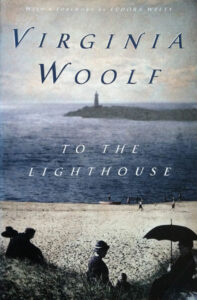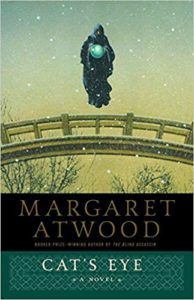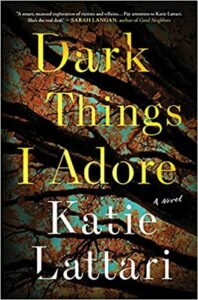There is a fascinating thread that runs through literature of transfiguring visual art into written form. There are many reasons why a writer might choose to incorporate an originally visual medium into the language of a short story or novel; perhaps it is the pure challenge of the thing, an act of great imagination and skill; perhaps it is the fact that writing the visual is so viscerally and aesthetically satisfying; perhaps it is that visual artists simply fascinate and awe those writers who choose to undertake the task of transfiguration.
I think it may be a little bit of all of the above, but also something more: the ability for visual art to gestate and birth revelation and memory, key components of any great story. Two of the great preoccupations of humankind are legacy and permanency— or more to the point, the lack thereof. Books that grapple with visual art tend to be grappling with these very concepts, the culmination of which is, most often, mortality itself.
In my novel, Dark Things I Adore, gifted painting student Audra Colfax goes from hunted to hunter when she lures her predatory MFA thesis advisor, artist Max Durant, to her remote Maine home. While Max believes he has been invited away from Boston to consummate the long-simmering sexual tension he senses between them, what Audra has in store is much darker and more terrifying than Max can begin to imagine. Because Audra knows that Max has a terrible, long-held secret—and it’s time to make him pay.
Dark Things I Adore is told in dual timelines, through three major points of view, and, critically, via Audra’s painting collection itself. There are ten paintings in the collection, each focusing on an abstracted object of relevance to Max’s terrible secret. These paintings provoke and taunt Max, bringing forth suppressed memories, images, and feelings that drive him further and further into a state of instability and rage. The paintings are targeted at Max’s subconscious, each work revealing both Audra’s motives and Max’s memories. Which, for Audra, is all part of the plan.
Audra confronts Max through her artful production, but she also confronts him through works of his own: “Animus,” the painting that launched his career, came from grisly inspiration. Audra knows the brutal lengths to which Max went to create his masterpiece, which, just like another book on this list, has cruelty captured in the very canvas. Through “Animus” Max asks: What tremendous legacy might a muse achieve if only they would sacrifice their well-being at the altar of ‘artistic genius’? And what Dark Things I Adore asks is: What might become of the man who thinks like that?
Here are four more books in which paintings become portals for the revelation of character, memory, and legacy in fiction.

The Picture of Dorian Gray by Oscar Wilde (1890)
When well-known artist Basil Hallward paints a portrait of the beautiful and cultured Dorian Gray, Dorian grows rageful because, unlike him, the painting will forever remain in a state of aesthetic perfection. Desperate to prevent the dissipation of his beauty and strength as he ages, Dorian gives his soul to remain outwardly beautiful. As the years pass and Dorian’s behavior and inner compass grow evermore vile and destructive, the painting takes the visual brunt, growing more and more hideous while Dorian remains untouched.
In one key moment of the book, the woman with whom he is romantically involved, an actress named Sybil Vane, commits suicide when he coldly spurns her. The painting of Dorian bears the scars of this act of cruelty, capturing the tragedy he has inflicted upon Sybil. Many years later, Dorian is so rattled and unnerved by the painting and its accumulation of scars—the physical manifestation of his lifelong cruelty—that he attempts to destroy it. But when his servants come in after hearing a loud commotion, they find a hideous, aged man on the floor next to a perfect portrait of Dorian Gray.
In the end, Dorian’s sins are paid back to him. The painting could only obscure his true monstrousness for so long before he is called to account, physical memory being transferred from the art object back to the man. Dorian’s greatest fear is ultimately realized: the permanency of paint and canvas will remain long after Dorian has, ultimately, succumbed to moldering in the ground. What he leaves behind, however, is an exquisite, unblemished portrait of himself than can outlive his infamy, which leads one to wonder: has Dorian “won” in the long run? Will the sins of his life eventually fade with time, the man replaced by the perfect image?

To the Lighthouse by Virginia Woolf (1927)
The Ramsay family journeys to their summer home in the Hebrides once at the beginning of the decade and once and the close of the decade, 1910 – 1920. In between the two visits that are the focus of the novel, time and war cause much change and loss, both in the world at large and within the family. This classic modernist novel focuses less on plot than on the relationships among those on holiday during these visits—husbands and wives, fathers and sons, friends and lovers.
One of the returning vacationers is Lily Briscoe, a painter preoccupied with her artistic legacy. During her first visit, she begins a painting, but, unable to make sense of the shapes and sensory details in a unifying way, is not able to complete it. It is only on her second visit, years later, that she is able to complete her painting, because she now has the confidence and abilities to concretize the fleeting and ephemeral scene of the beach and lighthouse through her vision and hand.
Lily realizes that art is the only true means of preservation, reflecting that “nothing stays, all changes; but not words, not paint.” The people with whom she had holidayed, the slant of the light, the particular topographies of the sandy beach—all of this will change and eventually move beyond reach if not for her art. Not unlike Dorian Gray, Lily’s legacy is something she will leave behind her in the form of a painting, the beautiful coastal scene she manages to capture simply a moment in time, fleeting and precious, both capturing and omitting the thousand myriad variables that come to form the piece.

Cat’s Eye by Margaret Atwood (1988)
When painter Elaine Risley returns home to Toronto for a retrospective of her career, she is forced to confront her past, including long-held memories tinged with trauma. As a child, Elaine was the victim of bullying from friends, a girl named Cordelia her particular tormenter. As the two grow up, however, the tables turn, and Elaine becomes the bully and Cordelia the victim. Over the years, the unhealthy relationship between these two frenemies continues until the retrospective, when, despite Elaine’s expectation to the contrary, Cordelia does not attend.
It is through Cordelia’s conspicuous absence that Elaine realizes that at least one of them has left their childish game of one-upmanship behind. Forced to experience her retrospective alone, which is filled with paintings rife with anger and hurt from her past, including intimations of people and moments that have left her wounded and disappointed – Elaine begins to come to terms with the meaning of her paintings and the journey of her career and her life.
The paintings that Elaine must confront seem to form a narrative only legible to her upon reflection. It is a corpus intimating the trials and tribulations of an entire life full of vulnerabilities and truths she must be the one to look upon most closely of all. Elaine must ruminate on what she has made, what these works reflect and refract back to her from various points in her life, and what to make of it all now, armed with her new understanding. The paintings become portals for reflection and revelation.

Duma Key by Stephen King (2008)
After a physically devastating freak accident at a construction site and the collapse of his marriage, Edgar Freemantle moves from Minnesota to Florida in an attempt to heal. Part of his recovery process involves taking up a passion long set aside— sketching and painting. As Edgar gets more into his art, it becomes clear that something else is getting into his art as well—something dark, and dangerous—maybe even deadly.
An evil spirit on Duma Key has infiltrated his works, spurred on by the traumatic past and memories of one of Duma’s other residents, Elizabeth Eastlake. Edgar soon realizes that through this haunting of his works by the entity Persephone, anyone who is in possession of one of his paintings either dies or kills someone close to him, and it becomes the fight of his life to exorcise this demon from Duma and his work.
At first, Edgar thinks his unique, hard-to-explain paintings are showing premonitions of a reality to come, but soon he realizes that the paintings might be influencing reality itself. Edgar’s works both anticipate and precipitate dark events, his art at times the tipping point between life and death. Instead of capturing a fleeting moment in time, like Lily Briscoe, Edgar is given an incredible power: a kind of mastery over a form of fate and legacy, his works able to manifest what comes next. Who lives, who dies, and what will remain.
***


















